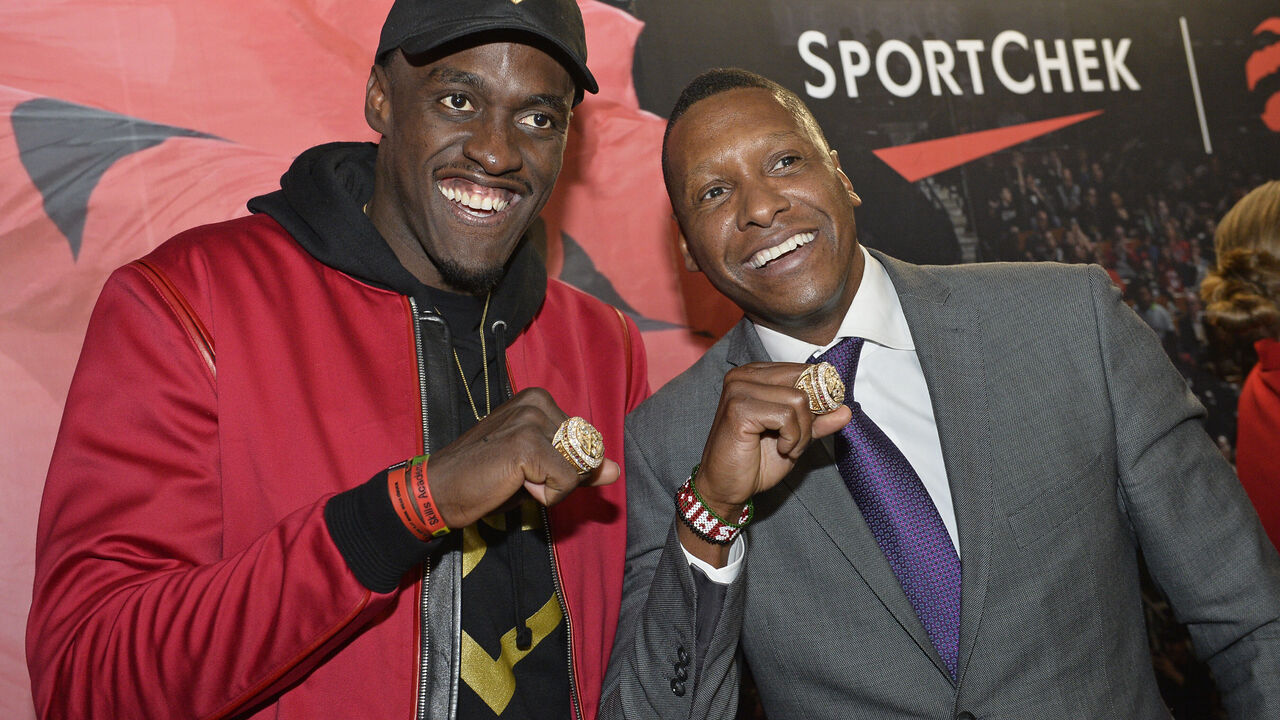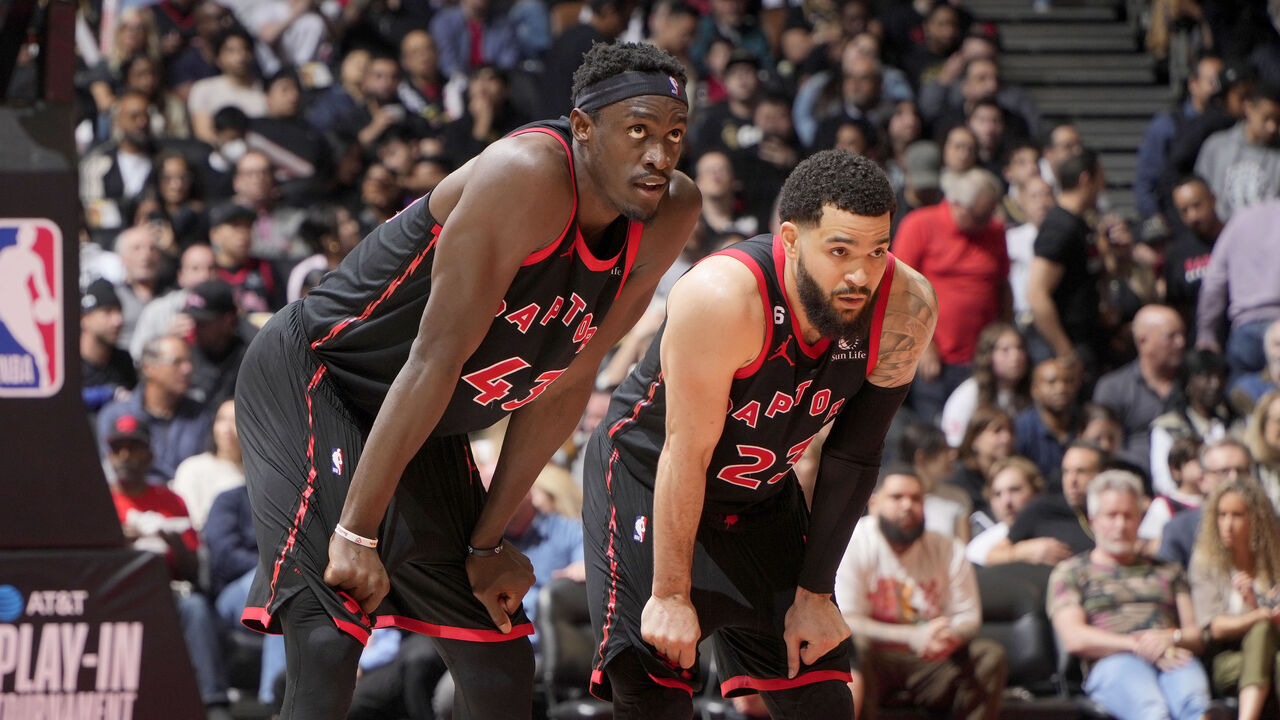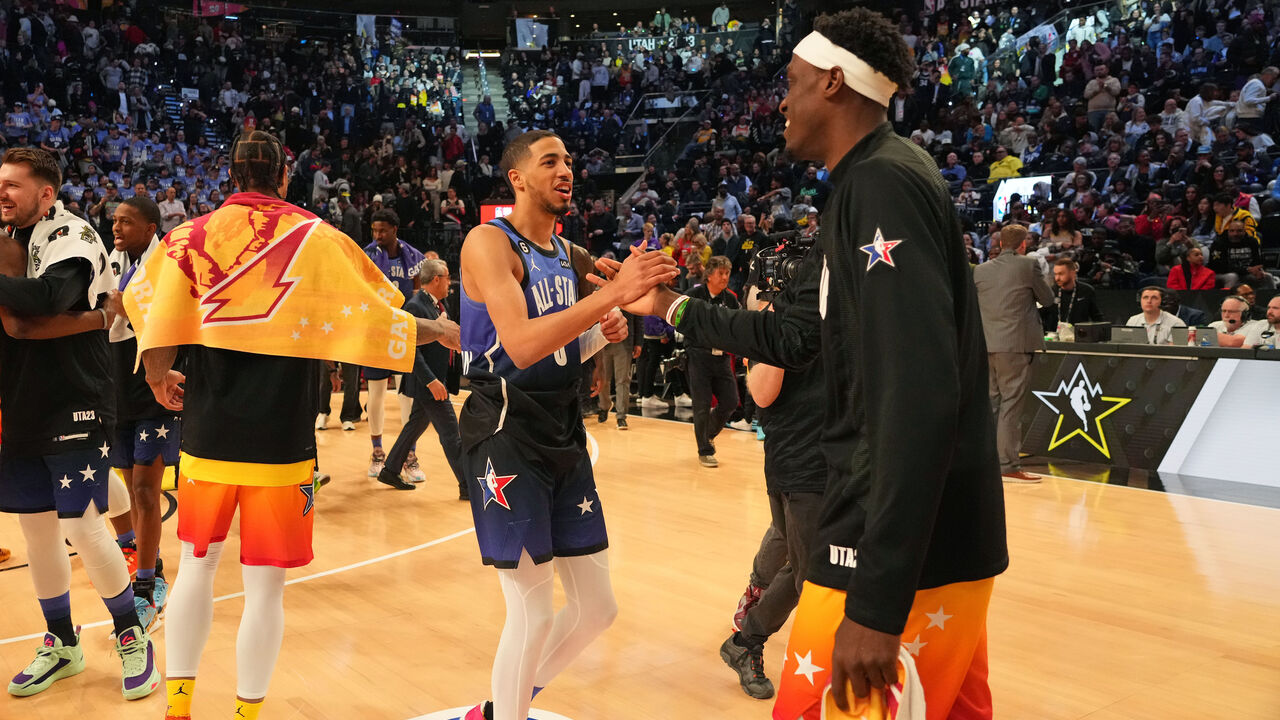Selling low on Siakam caps Raptors' years-long decline
New beginnings can be exciting - full of hope, promise, and mystery. For the Toronto Raptors, who have now fully turned the page to a chapter that'll be written by third-year star Scottie Barnes, the unknown symbolizes only a fresh start.
Before any new excitement can take hold, the team must reckon with the painful end of its championship chapter. By trading Pascal Siakam for pennies on the dollar, the most successful era in Raptors history has come to an underwhelming conclusion; an unfortunately predictable one that highlights both how high this franchise had climbed, and how far it has fallen.

Under the leadership and guidance of team president Masai Ujiri, the Raptors were transformed. Once a perennial laughingstock - a club representing nothing more than opponents' annual trip north of the border - Canada's team became a model of sustained excellence.
After falling backward into a competitive core following the 2013 trade of Rudy Gay to Sacramento - a deal originally believed to be made for the purpose of tanking, with Canadian prodigy Andrew Wiggins headlining the 2014 draft - Ujiri built the foundation of a perennial contender. Brick by brick, trade by trade, the Raptors kept climbing, rewriting the franchise's record books every season.
Only the Golden State Warriors won more games from 2013-14 to 2019-2020, a stunning turnaround for a Raptors franchise that posted the league's fifth-worst record over its first 18 years of existence. Only the Warriors and Cleveland Cavaliers won more playoff games between 2015-16 and 2019-2020, a five-year run that saw Toronto average 56.8 victories per 82 games and win at least one playoff series every spring. Heck, the Raptors haven't finished a Toronto-based season with a losing record since 2012-13, although they're 10 games under .500 this year.
While blockbuster trades for Kawhi Leonard (plus Danny Green) and Marc Gasol put the finishing touches on a team that would ultimately claim the 2019 NBA title, the scouting, drafting, and development work done in the background made it all possible.
The undrafted Fred VanVleet shot his way into postseason lore over the final two rounds of that 2019 run, then turned himself into an All-Star. Norman Powell was drafted 46th overall in 2015 with a pick the Raptors acquired from Milwaukee in exchange for Greivis Vasquez. Toronto also landed the selection that became OG Anunoby in that lopsided deal. Jakob Poeltl, drafted with a 2016 pick the Raptors somehow acquired from New York for Andrea Bargnani, was included in the package that netted the Raptors Leonard and Green.
However, the most inspiring and impactful of those development stories was Siakam.
A raw talent who picked up basketball much later in life than his NBA peers, the Cameroonian forward went from an energy player who ran the floor and finished fast breaks as a rookie to the second-leading scorer on a championship team by his third year. After being named the league's Most Improved Player in 2018-19, Siakam became an All-Star and All-NBA selection in 2019-2020, helping franchise icon Kyle Lowry lead the way for a Leonard-less team that played at a 60-win pace in the pandemic-shortened campaign.
After hitting some road bumps during the 2020 bubble and a displaced season in Tampa the following year, Siakam overcame injuries and naysayers to return to All-NBA status in 2021-22, then added another All-Star selection in 2023. Despite decreased usage and less of the ball in rookie head coach Darko Rajakovic's point-five offense this season, Siakam has still averaged 22.2 points, 6.3 rebounds, and 4.9 assists on 60% true shooting.
Though Siakam's best suited to be a secondary scorer on a legitimate contender, the Raptors' recent lack of success has had more to do with poorly built supporting casts around Siakam than with any great flaw of his. He remains an undeniable star and has been one of the modern sports world's greatest development stories.
For Toronto, his awkward, drawn-out departure has become a perfect encapsulation of the team's recent missteps and the franchise's fall from grace.

It's not just the players who have departed, but also the paltry returns - and a suddenly uneven draft record - that tell the story.
VanVleet walked away for nothing in 2023 free agency after a middling Raptors team reportedly balked at underwhelming trade offers for the star guard ahead of last year's deadline. Poeltl is back, but only because Ujiri's front office traded a first-round pick for the average-ish starting center while four games under .500 last February. Anunoby was turned into future building block Immanuel Quickley, Canadian forward RJ Barrett, and a high-value second-rounder, but the rest of Toronto's outgoing package in the Anunoby deal tells more of the story.
Malachi Flynn, drafted one spot ahead of Grizzlies star Desmond Bane in 2020, never looked like an NBA-caliber rotation guard during his time with the Raptors. Meanwhile, big man Precious Achiuwa has regressed since a 2022 breakout. Achiuwa was the centerpiece of a sign-and-trade that sent Lowry to Miami in 2021 only months after the Raptors had reportedly turned down better offers for Lowry ahead of that year's deadline.
Perhaps it's fitting, then, that the player who best symbolized the franchise's scouting and development success is gone, because while the names and faces remain the same, this front office doesn't look anything like the one that had become the envy of the league just a few short years ago.
It's not just the Raptors' ability to identify and maximize talent that's fallen off. The same shrewd decision-makers who relentlessly chased a championship somehow became paralyzed by indecision and mediocrity. The haul for Anunoby temporarily silenced such criticisms, but the Siakam trade return only reinforces them.
Given his reported desire to remain in Toronto, it stands to reason that had the Raptors tabled the maximum extension Siakam was eligible for last summer, the two-time All-Star would've signed it. Though Ujiri said he merely wanted to see what a more unselfish version of Siakam and the Raptors looked like first, the fact such an offer never came was a clear indication that the team wasn't convinced Siakam would be worth max value into his 30s.
That's a fair assessment of a non-shooting forward, but it only makes the front office's decision-making more perplexing. Toronto was no longer sold on Siakam - who was reportedly seeking a full-term max - as a max player going forward. But rather than trade him with a full year remaining on his contract, the Raptors held on to the 29-year-old going into a clear developmental season centered around Barnes, and one in which Siakam's offensive involvement was going to be limited by a new system. Talk about shooting yourself in the foot at the bargaining table.
By the time the front office finally pulled the plug on what was always going to be a doomed experiment, a two-time All-NBAer still in his prime - one of the five or six best players in franchise history - was traded for three middling draft picks and salary filler.

Two of those picks are likely to be late first-rounders in what's being touted as a colossally poor draft class this summer; Indiana's (top-4 protected) 2026 first-rounder is perhaps the best asset acquired in this deal. However, with superstar guard Tyrese Haliburton locked up long term and Siakam reportedly expected to re-sign, don't expect much from that pick, either.
Between Jarace Walker, Bennedict Mathurin, Andrew Nembhard, Aaron Nesmith, and Ben Sheppard, among others, the Pacers boast an intriguing collection of seemingly tradable youngsters. Not one of them is headed to Toronto, with Bruce Brown, Jordan Nwora, and Kira Lewis, who saw his playing time in New Orleans diminish after being drafted 13th overall in 2020, the only incoming players.
As a do-it-all role player with defensive versatility and a heady off-ball game, Brown could serve as an important connector for Rajakovic's Raptors if the team still wants to chase a play-in spot. But with his $23-million salary for next season a team option, Brown could also be a prime trade target for contenders, potentially allowing Toronto to squeeze more out of the Siakam deal between now and the Feb. 8 deadline.
Regardless, Siakam is gone, and the Barnes era is officially upon us. With the latter emerging as a potential franchise-level star, Quickley and Barrett in the fold, some newfound cap flexibility, and additional draft capital, Raptors fans still have reason for optimism. But if Barnes is going to spearhead teams that even come close to the heights reached by Ujiri's Raptors squads of days gone by, the organization has to get back on track, and the front office needs to be better. Just ask Siakam himself.
If his last year in Toronto and this trade are any indication, I wouldn't hold my breath.
Joseph Casciaro is theScore's senior content producer.